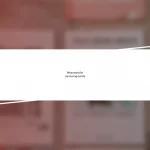Key takeaways:
- Creative brainstorming thrives in an open, collaborative environment where diverse perspectives lead to innovative solutions.
- Techniques such as visual aids, time limits, and changing environments significantly enhance creativity and clarity during sessions.
- Overcoming challenges like fear of criticism and managing idea flow is crucial for effective brainstorming.
- Establishing clear objectives and a structured agenda can greatly improve the focus and outcomes of brainstorming sessions.
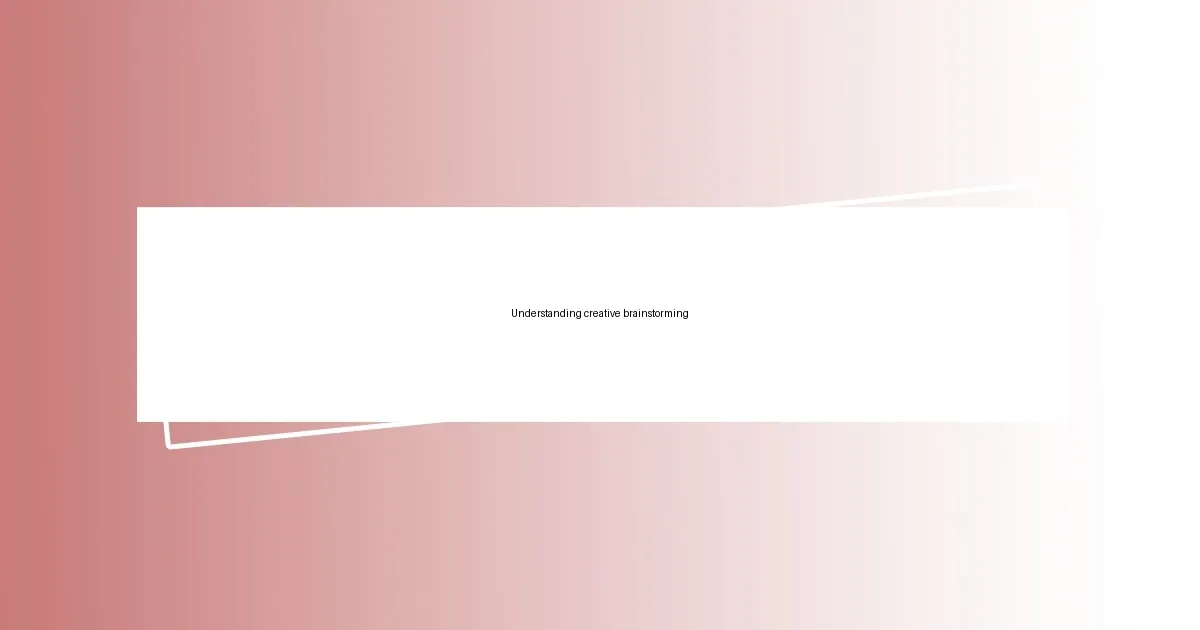
Understanding creative brainstorming
Creative brainstorming is all about generating ideas in an open and uninhibited environment. I remember a session where my team used sticky notes to jot down every thought that came to mind; it was chaotic yet electrifying. Have you ever felt that rush of adrenaline when a wild idea strikes?
The beauty of creative brainstorming lies in its collaborative nature. When I led a group workshop, seeing individuals feeding off each other’s energy was thrilling. It reminded me how diverse perspectives can spark innovative solutions, transforming the mundane into something extraordinary. Isn’t it fascinating how one person’s outrageous idea can inspire another?
It’s important to embrace the spontaneous and often messy process of brainstorming. I’ve had moments when seemingly outlandish thoughts paved the way for breakthroughs. Isn’t that the magic of creativity? Allowing ideas to flow freely can lead to unexpected connections that you might never have anticipated!
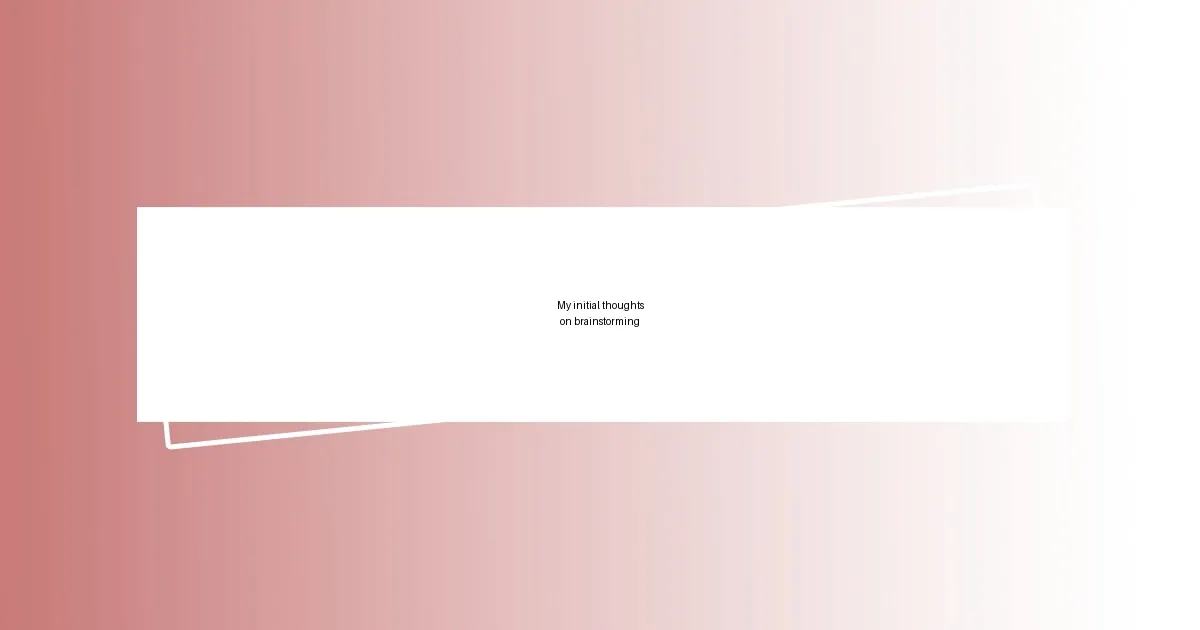
My initial thoughts on brainstorming
I’ve always found brainstorming to be a fascinating dance of ideas. Initially, it felt overwhelming; the thought of throwing out any concept, no matter how absurd, seemed risky. But then I realized how liberating it is to let go of self-censorship. The excitement in the room when we unleashed our creativity was palpable. It was like unlocking a door to a treasure chest of potential, where everyone’s input was a key.
- Embracing chaos can lead to clarity.
- Diverse teams generate richer ideas.
- A supportive environment fuels creativity.
- My best ideas often came when I let go of perfection.
Looking back on my experiences, I recall a particularly lively session where ideas flowed like water. I remember one participant suggesting an idea that completely baffled me at first. Yet, as we built upon it, we uncovered insights that shaped our project in remarkable ways. It was a true lesson in the value of open-mindedness.
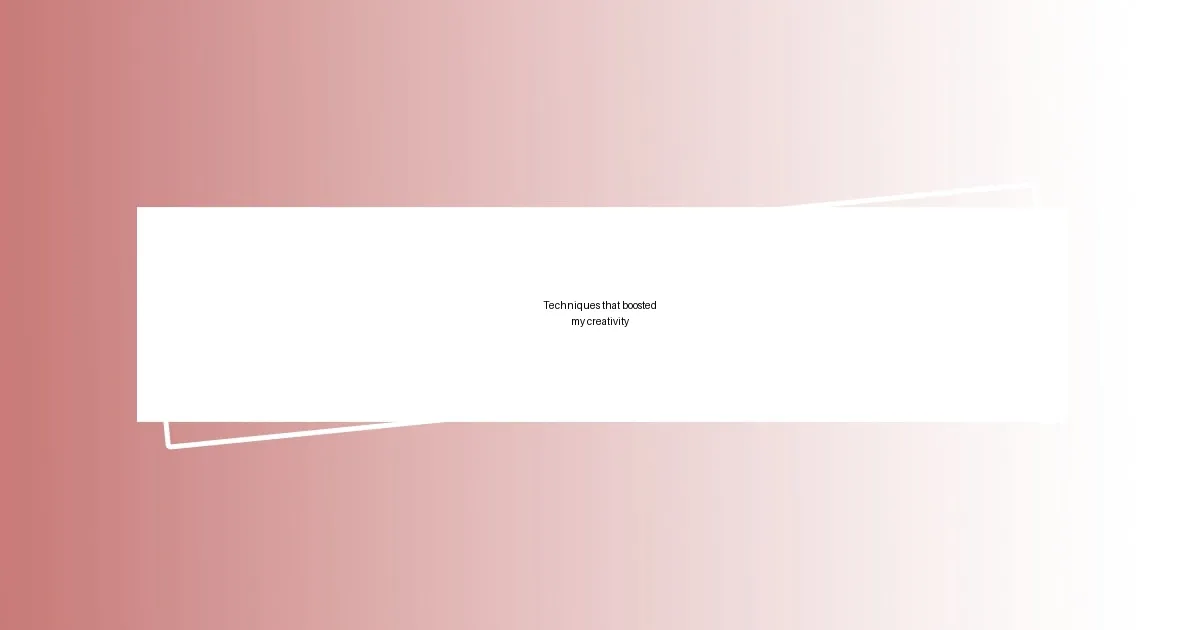
Techniques that boosted my creativity
Utilizing visual aids was a game changer for me in the brainstorming process. I began incorporating mind maps to visually organize my thoughts. There’s something about seeing my ideas laid out that makes connections clearer. During one session, I mapped out a project on a large whiteboard, and as I added branches, my thoughts branched out too—suddenly, what seemed complicated became straightforward. Have you ever felt a sense of clarity when you could visualize your ideas?
Another technique that transformed my creative sessions was setting time limits. I noticed that when I was rushed, focusing on generating quick ideas sparked a different level of creativity. It’s oddly liberating to just throw thoughts out there without the weight of judgment or expectation. One time, I set a timer for just five minutes. The energy in the room shot up as we raced against the clock, and we ended up with a whirlwind of innovative concepts that would never have surfaced in a slower pace. Isn’t it interesting how pressure can sometimes ignite creativity?
Lastly, changing my environment has had a profound impact on my creativity. I recall an inspiring retreat at an old lodge in the woods where I participated in a brainstorming session. Surrounded by nature, my mind felt freer, and ideas flowed more organically. The fresh air and green landscape encouraged a different kind of thinking—it was as if the environment itself was a muse. It’s amazing how a simple change in scenery can awaken dormant creative thoughts, isn’t it?
| Technique | Observation |
|---|---|
| Visual Aids | Helps clarify connections in ideas. |
| Time Limits | Encourages rapid idea generation under pressure. |
| Change of Environment | Fosters organic thinking and fresh perspectives. |
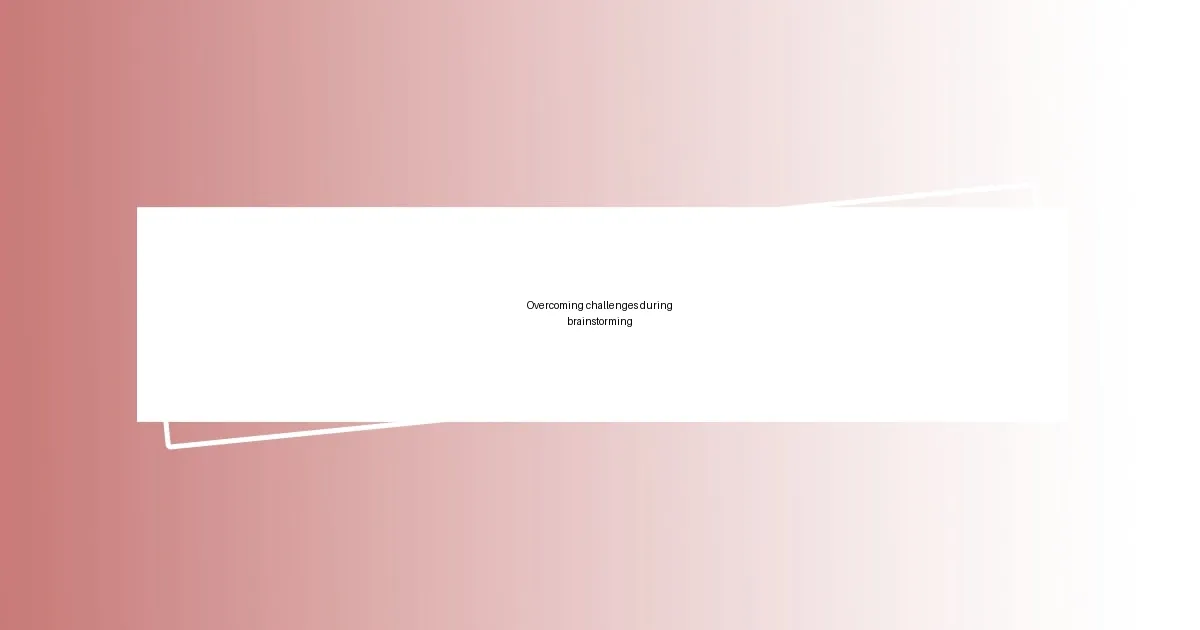
Overcoming challenges during brainstorming
When brainstorming, one challenge I often faced was the fear of criticism. I can vividly recall a session where I hesitated to share a quirky idea I had. I nearly let the moment slip away, but something in me urged me to speak up. That idea, which I thought was silly, ended up sparking an incredible discussion that led to an innovative solution. Isn’t it interesting how our fears can sometimes rob us of valuable contributions?
Another challenge was managing the flow of ideas when they became too chaotic. I remember a time when we had so many thoughts racing around that it felt like we were losing focus. To counter this, we established a “parking lot” for ideas that weren’t immediately relevant, allowing us to revisit them later without derailing the current discussion. This small adjustment made a huge difference—do you find it helpful to keep track of off-topic suggestions too?
Finally, dealing with dominant personalities can sometimes stifle quieter voices during brainstorming. In one instance, I noticed that one team member was overshadowing others, causing a few to withdraw. I took the initiative to encourage quieter team members to share their thoughts first in our subsequent sessions. This shift not only balanced the conversation but also revealed some profound insights that might have otherwise gone unheard. It’s amazing how creating space for everyone can enrich the outcome, don’t you think?
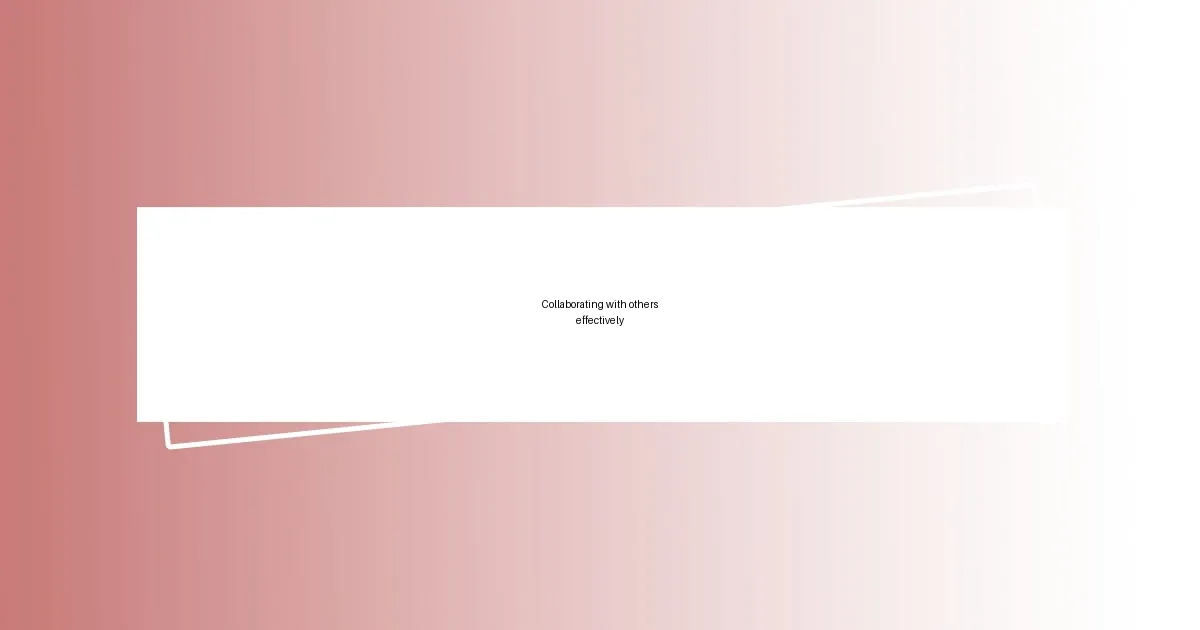
Collaborating with others effectively
When I think about effective collaboration, communication is at the forefront of my mind. I remember a brainstorming session where we all struggled to articulate our ideas clearly. It became apparent that using simple and direct language transformed the way we exchanged thoughts. When everyone felt understood, the energy in the room shifted; there was a sense of camaraderie. Have you ever experienced a moment when clarity made the conversation flow effortlessly?
Another crucial aspect of collaboration for me has been embracing diverse perspectives. During one project, we invited team members from different departments to join our brainstorming sessions. Their unique insights added layers to our discussions that I never anticipated. A finance expert, for example, helped us see the feasibility of an idea, while a marketing colleague brought in customer perspectives. Isn’t it fascinating how varied backgrounds can lead to richer, more innovative solutions?
Lastly, I’ve learned that establishing a safe space is vital for genuine collaboration. I recall implementing a “no idea is a bad idea” rule in one of my teams, which encouraged everyone to express their thoughts without hesitation. This approach fostered a more open environment, and I was genuinely surprised by how many creative solutions emerged. It’s incredible how a little reassurance can unlock a floodgate of creativity—what’s stopping your team from sharing their brilliance?
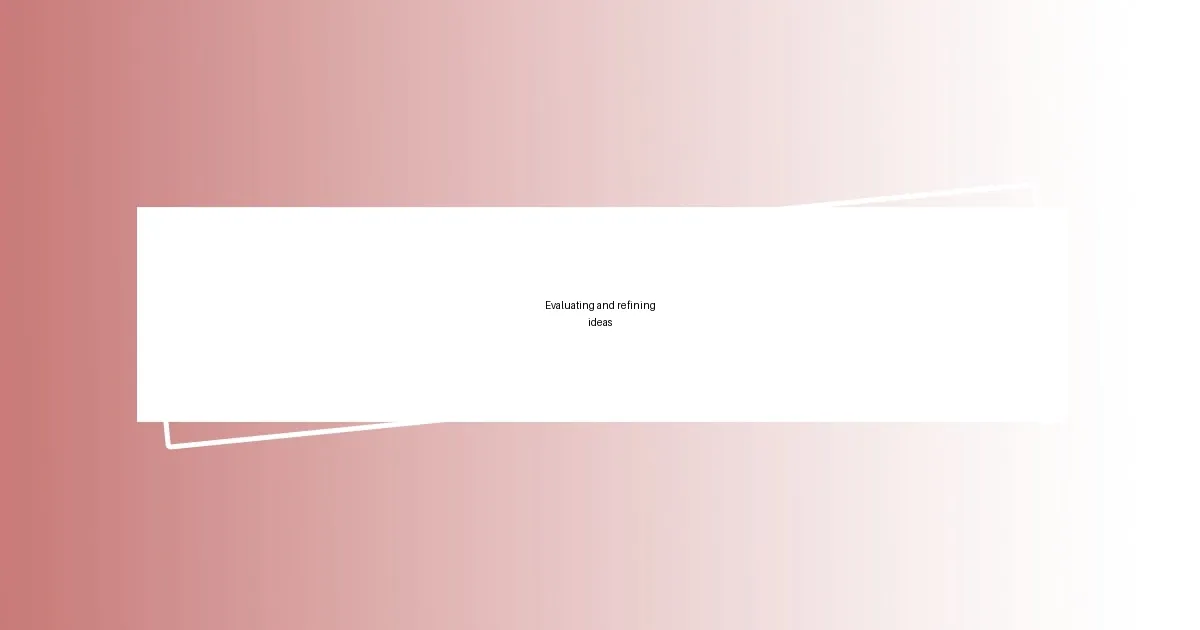
Evaluating and refining ideas
Evaluating ideas is a critical step in the brainstorming process. I recall a specific instance when our group gathered to sift through a mountain of ideas, each one bubbling with potential. By using a simple rating system, where we ranked ideas based on feasibility and impact, we gained clarity. It felt empowering to see everyone’s thoughts laid out, helping us identify the gems worth pursuing. Have you encountered situations where a structured evaluation revealed hidden treasures among fleeting thoughts?
Refining these ideas takes equally careful consideration. I once led a session where we dissected an idea to enhance its strength. We broke it down into components, examining each piece for practical application and potential hurdles. This analytical approach transformed a vague concept into a robust plan that felt genuinely actionable. Isn’t it amazing how a bit of scrutiny can morph a nascent thought into a tangible opportunity?
Lastly, I believe that collaboration during evaluation is vital. At one brainstorming session, we shared feedback in pairs, allowing us to discuss each other’s thoughts openly. It was illuminating to hear my partner’s perspective on my ideas, which made me rethink their practicality and potential impact. I realized that sometimes, bouncing ideas off another person can illuminate aspects I hadn’t considered. How have you leveraged peer input to amplify your own creative processes?
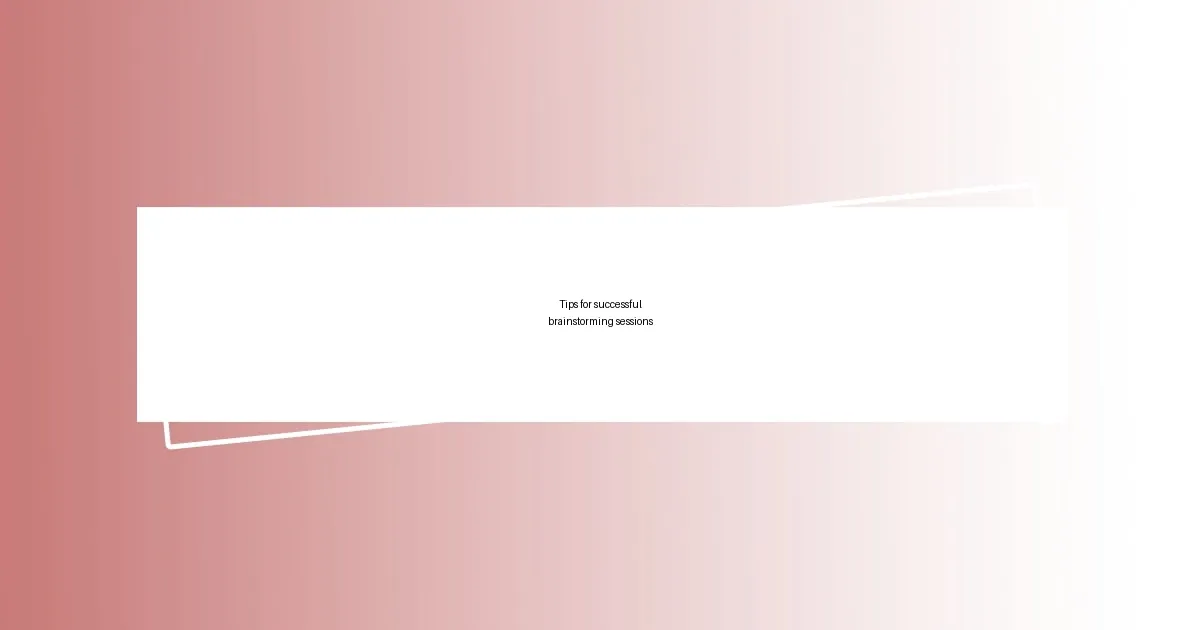
Tips for successful brainstorming sessions
When it comes to establishing a successful brainstorming session, setting a clear objective is a game-changer. I remember one meeting where we dove in without a defined goal, and it quickly became a chaotic list of ideas that lacked direction. But once we clarified our purpose—understanding user needs for a new app—the energy shifted. Everyone’s contributions became focused, resulting in insights that truly resonated with our target audience. Can you imagine how much smoother discussions flow when everyone knows the end goal?
Creating a structured agenda can enhance your brainstorming experience significantly. In one memorable session, I introduced time limits for discussing specific ideas. This approach encouraged us to think on our feet and pushed us to articulate our thoughts concisely. I’ve always found that the pressure of a ticking clock brings forth a burst of creativity; it’s as if the urgency unlocks hidden ideas. Have you ever noticed how innovation often springs forth in the heat of the moment?
Lastly, incorporating fun activities into the mix can breathe new life into the brainstorming atmosphere. One time, I suggested we start our session with a quick icebreaker—a silly word association game. The laughter and relaxed vibes paved the way for more open sharing as the session unfolded. It’s incredible how loosening up with a light-hearted activity can break down barriers and spark creativity. What unconventional methods have you tried to ignite that same energetic creativity in your team?














